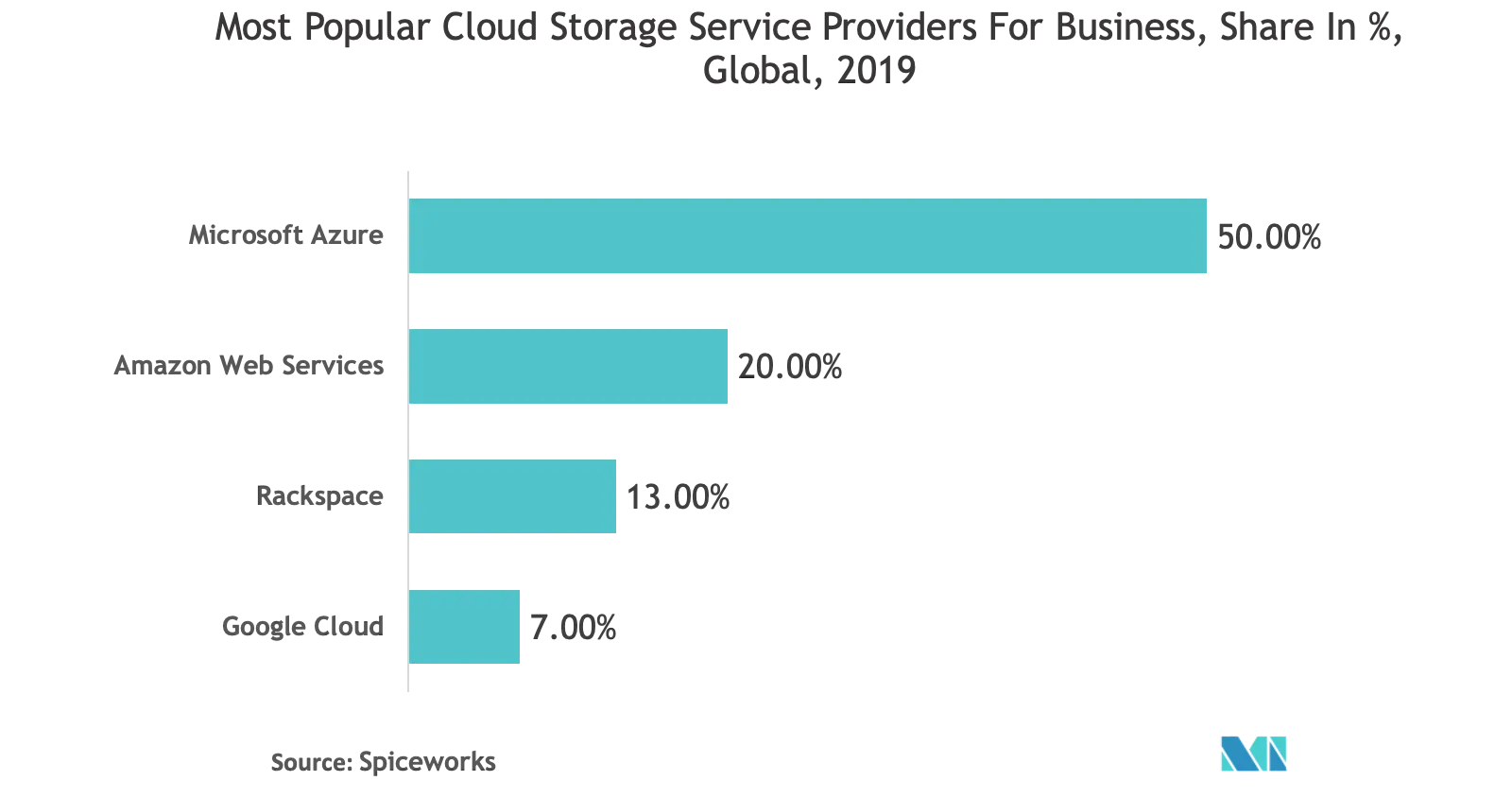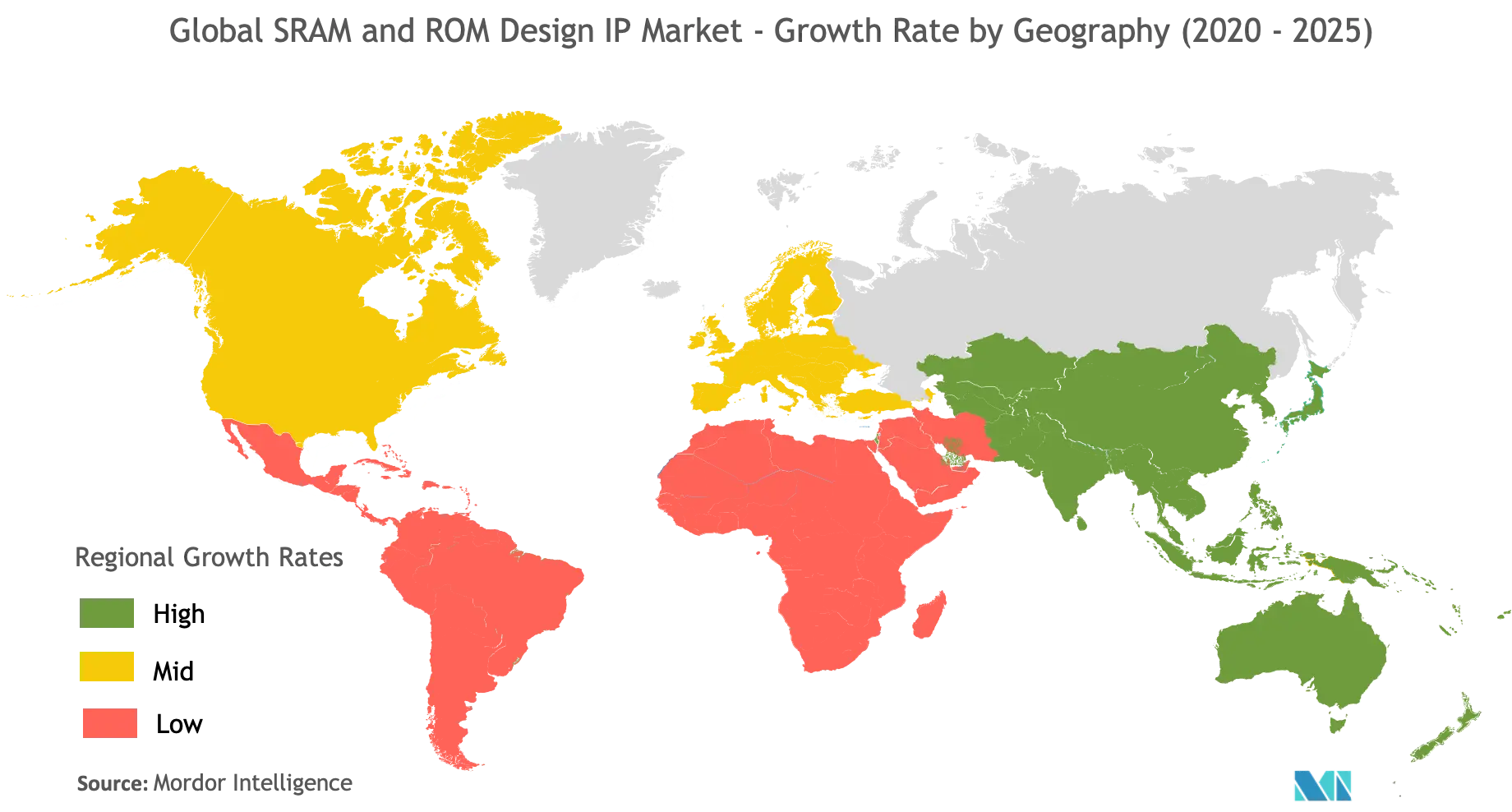Market Trends of Global SRAM and ROM Design IP Industry
This section covers the major market trends shaping the SRAM & ROM Design IP Market according to our research experts:
Increasing Demand For Enterprise Storage Applications to Drive the Growth for MRAM
- Enterprise storage is witnessing significant growth in demand, due to the rise in IoT, AI, and big data applications. The introduction of advanced wireless networks, such as 5G, is expected to further increase the demand in the data center as well as the edge. The current enterprise storage hardware market is dominated by prominent vendors, such as HPE, Dell EMC, and NetApp, which sell traditional storage arrays, along with all-flash options, software-defined solutions (SDS), and hyperconverged infrastructure (HCI).
- Businesses are expected to register double-digit growth in the next two years, and by 2022, an additional 20% of the companies plan to use cloud storage infrastructure, due to an increase in the demand for high-capacity hard disk drives, all-flash storage, and cloud services, according to Spiceworks. A large share of the enterprise storage demand is driven by cloud storage, and the adoption of cloud storage in the enterprise sector is expected to witness exponential growth over the forecast period. According to Spiceworks, about 39% of the businesses use cloud storage infrastructure and over 20% of the enterprises plan to do so by 2022.
- As the price of all-flash storage is falling, the demand for high-performance solutions is increasing. Currently, about 18% of the enterprises use all-flash storage arrays, and in addition, 14% are planning to move to the all-flash array.
- Such developments and the proliferation of the existing storage technologies, such as HDDs and SSDs, are expected to boost the market demand. However, recently, eNVM witnessed an increased roll-out. Some NVMe-oF solutions are becoming hybrid flash and HDD-based systems, which are increasingly using three bit per cell and four bit per cell NAND for high-density flash memory applications, according to Forbes.

Asia-Pacific to Witness Highest Growth
- Semiconductor sales in the Asia Pacific region, excluding China and Japan, during 2019 stood at USD 113.9 billion, according to SIA. Apart from these, the semiconductor sales in China alone during 2019 stood at USD 143.7 billion. Such developments in the region are further augmenting the demand for various electronic products in the region.
- In addition to this, the region's demand for various storage solutions is increasing significantly and expected to be the major driver behind the global demand for enterprise storage solutions along with industrial demand for memory solutions. For example, in April 2020, Alibaba announced USD 28.2 billion dollars in data centers aiming to speed up the Covid-19 recovery in the region.
- Apart from this, China is one of the global leaders in OSAT owing to JCET, which accounts for a prominent share of the country's revenue from the semiconductor industry. Apart from China, Taiwan is another major player in the semiconductor industry, which is home to prominent regional foundries such as TSMC and also national foundries operated by various Semicon vendors. According to MOF (Taiwan), the total import value of semiconductor manufacturing equipment in the country during 2018 stood at USD 7.59 billion.
- Taiwan is also majorly an OSAT player, and in recent years the technological shift in the regional enterprises is empowering the design IP base in the country. TSMC has formed alliances and partnerships with various design and IP providers; also, the company is increasingly focusing on reducing its dependence on design IP vendors. For example, TSMS and Synopsys have formed an alliance to develop a portfolio of design IP for various memory solutions


